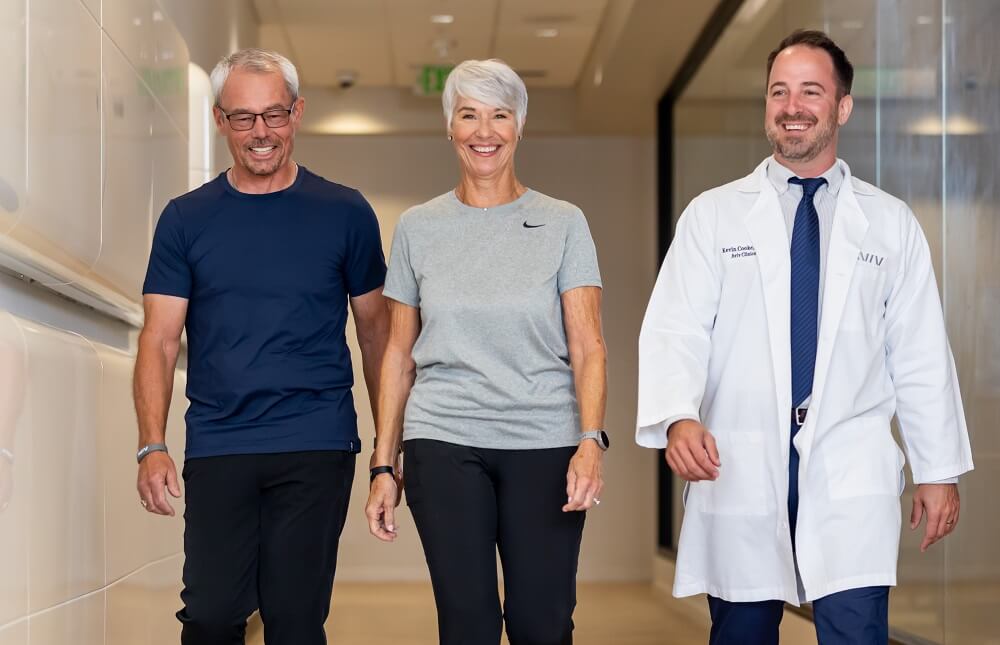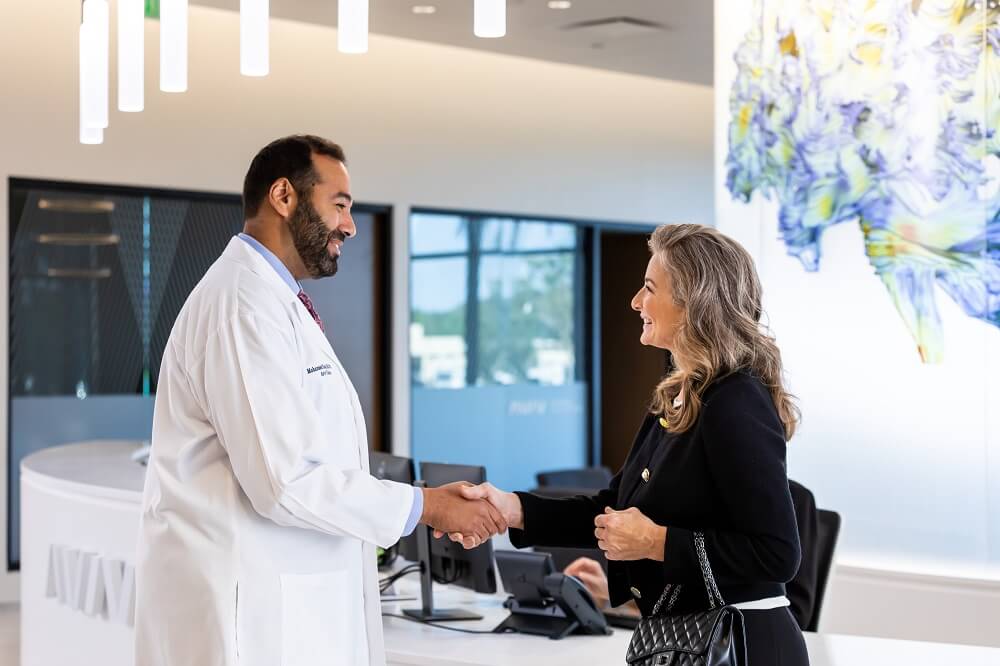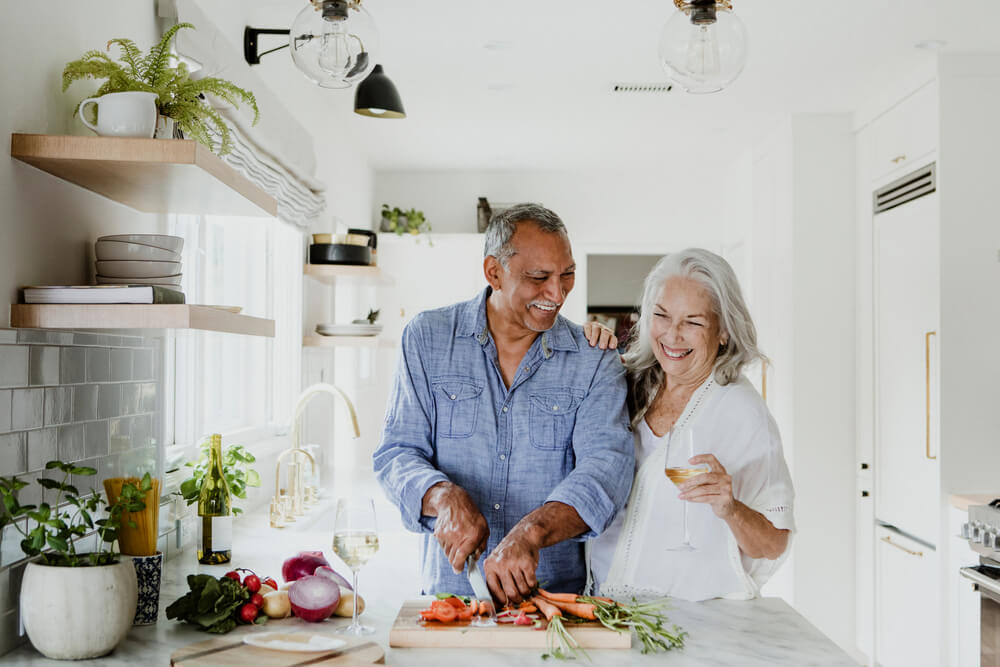pTau Testing for Alzheimer’s Risk: What It Is, Why It Matters, and How Aviv Clinics Can Help
pTau Testing for Alzheimer’s Risk: What It Is, Why It Matters, and How Aviv Clinics Can Help
As the years progress, it’s common for us to become more aware of occasional memory lapses or moments of forgetfulness. But when do these minor gaffes become a cause for concern? At Aviv Clinics, we believe in the power of proactive aging, and we’re proud to introduce walk-in pTau-217 testing for Alzheimer’s risk to our many brain health offerings. This groundbreaking blood test can help assess your risk for developing Alzheimer’s disease, even before symptoms appear.
With Alzheimer’s disease affecting nearly 7 million people in the United States alone, you may be curious if pTau testing is right for you. Here’s what you need to know about pTau testing at Aviv Clinics, and how it can fit into a comprehensive plan to protect your brain health.
What Is pTau?
Phosphorylated tau, or pTau, is a protein found in the brain. In healthy brains, tau proteins can help stabilize the structure of neurons, or nerve cells. But in the early stages of Alzheimer’s disease, tau becomes abnormally phosphorylated, forming tangles that disrupt communication between brain cells.
Although pTau isn’t considered a direct cause of Alzheimer’s disease, high levels of pTau in the blood are now recognized as one of the most accurate indicators of early Alzheimer’s disease. Elevated pTau levels are correlated with brain atrophy, cognitive decline, and accumulation of amyloid plaques.
Importantly, the presence of elevated pTau does not confirm a diagnosis of Alzheimer’s but suggests an increased likelihood of associated brain changes.
Why Aviv Clinics Offers pTau Testing
Until very recently, detecting Alzheimer’s pathology in the brain required invasive spinal taps or expensive PET scans. The recent development of blood-based biomarkers like pTau has transformed early detection, offering a faster, simpler, and more accessible path to answers.
While pTau-217 testing is not yet FDA-approved as a standalone diagnostic tool, emerging research shows its strong potential to aid in early risk assessment for Alzheimer’s-related pathology. At Aviv Clinics, we offer this test as part of a broader approach to brain health for individuals interested in gaining early insights, especially those with risk factors or mild cognitive symptoms.
Research published in January 2024 noted that commercially available pTau-217 testing showed “high diagnostic accuracy.” In their analysis, pTau tests outperformed all other blood-based biomarkers in predicting amyloid and tau status.
How Accurate Is the pTau Test Compared to Other Alzheimer’s Tests?

The pTau blood test offers comparable accuracy to other tests available. Additionally, tests that measure pTau provide an early glimpse into changes in the brain that may be happening silently.
Although traditional cognitive screening tests can reveal signs of dementia or Alzheimer’s disease, these are typically not performed until a patient begins to experience preliminary symptoms. However, our bodies can show elevated levels of pTau-217 more than 20 years prior to the onset of Alzheimer’s disease symptoms.
The pTau blood test has comparable accuracy to spinal fluid analysis and PET scans. Unlike these complex tests, however, it only requires a simple blood draw to perform.
Despite these strengths, it is important to recognize that no test is perfect. Conditions like chronic kidney disease, stroke, and myocardial infarction can also increase pTau levels, potentially leading to false-positive results. For those with high pTau levels, further evaluation and testing are required to confirm their source.
While early results are encouraging, clinical interpretation should always be done in context and in consultation with a trained healthcare professional. At Aviv Clinics, our physicians will carefully review your pTau results with you, provide clear answers, and tailor any recommended follow-up to your specific needs.
Who Should Consider a Walk-in pTau Test?
The pTau-217 test is ideal for individuals who meet one or more of these criteria:
- Are age 60 or older
- Have a family history of Alzheimer’s or dementia
- Are experiencing subtle or unexplained cognitive changes
- Want a baseline assessment of their brain health
This test is not currently approved as a screening tool for the general population and should be interpreted as part of a larger clinical picture.
What to Expect When You Get a pTau Test at Aviv Clinics

The process of pTau testing at Aviv Clinics is simple:
- Pre-Testing: You don’t require an appointment or have to fast before pTau testing at Aviv. However, as with many blood tests, you should not take biotin supplements for a minimum of three days before your blood draw. If you take a daily multivitamin, please check its ingredients to determine if it contains biotin.
- Blood Draw: A simple blood sample is taken during your walk-in testing visit at our clinic at The Center for Advanced Healthcare in The Villages®.
- Analysis: Your sample is sent to a certified laboratory and tested for pTau levels.
- Results: After approximately 10 days, one of our board-certified physicians will review your test results with you and discuss and what steps, including lifestyle interventions, you can take next to preserve your brain health.
What Happens After You Get Your pTau Results?
Our physicians will evaluate your results in the context of your full medical history. Depending on your results, they may recommend further imaging or cognitive testing when indicated.
Your results are just the beginning. Whether your pTau levels are elevated or normal, we’ll help you:
- Understand your current brain health profile
- Identify lifestyle risk factors
- Determine whether additional assessments are appropriate for a more in-depth evaluation
- Explore personalized interventions, including the Aviv Medical Program, which can be tailored to address your cognitive performance.
Why Early Detection Matters: The Aviv Clinics Approach

Blood-based biomarkers like pTau are the next frontier in Alzheimer’s research and prevention. Aviv Clinics is proud to be part of this future by offering cutting-edge tools that empower individuals to take charge of their brain health.
The earlier you understand your cognitive health, and the more options you have for both prevention and treatment. If testing reveals that your pTau levels are elevated, you may be a candidate for more advanced cognitive assessments, targeted brain health therapies, or ongoing monitoring to track changes over time. You may consider lifestyle modifications like dietary changes, physical activity, and stress management. These factors, and others, can have a direct impact on your brain health.
For those looking to take a more proactive approach, Aviv Clinics offers comprehensive, personalized programs designed to enhance brain performance. Our clinical team will create a custom Aviv Medical Program based on your test results, physiology, medical history, and personal goals. Your tailored plan may include a combination of evidence-based interventions such as:
- Our unique hyperbaric oxygen therapy protocol
- Cognitive exercises
- Nutritional counseling
- Physical training
- Other therapies as prescribed
If testing reveals that your pTau levels are within normal range, you’ll have a valuable baseline to compare against in the future.
Either way, this test allows you to take charge of your cognitive health today — when you can work towards making a meaningful difference. Early identification of at-risk individuals, particularly those with mild symptoms or risk factors, can help tailor effective interventions.
At Aviv Clinics, pTau testing is used as part of an integrative approach rather than a standalone diagnosis.
Is pTau Testing Covered by Insurance?
At this time, pTau-217 testing is not covered by Medicare, Medicaid, or private insurance. This means the cost of these tests is typically out-of-pocket. However, patients with a Health Savings Account (HSA) or Flexible Spending Account (FSA) may be covered if deemed medically necessary. If you have an HSA or FSA, we recommend you contact your plan administrator and inquire about coverage.
How Much Does pTau Testing Cost?
Aviv Clinics offers pTau-217 testing for $350 on a walk-in basis, making this advanced biomarker test both accessible and affordable. Unlike testing conducted at clinical laboratory services, this cost also includes physician interpretation of your results.
When certain conditions apply, pTau testing may qualify as a tax-deductible expense in the United States. Consult your tax advisor for more information about deductible medical expenses.
Are you interested in pTau testing as part of a broader evaluation of your cognitive health? Contact our team for details.
Take the Next Step
If you’re an older adult and starting to think more seriously about your brain health, you’re not alone. Fortunately, with cutting-edge tools like pTau testing, Aviv Clinics empowers you to take control of your cognitive health, now and in the future.
Whether you’re concerned about memory changes, have a family history of Alzheimer’s, or want a clearer picture of your brain health, our team is here to help.
Call Aviv Clinics at 352-492-6634 or reach out through our contact form to learn more, or stop by our clinic in The Villages between 8:00 AM and 4:00 PM, Monday through Friday for your walk-in pTau blood test.
Your brain deserves a proactive plan. Aviv Clinics is ready to help you build it.
How Caroline Ducharme Overcame Chronic Post-Concussion Syndrome and Returned to Championship Basketball
When the final buzzer sounded in the University of Connecticut’s victory in the 2025 NCAA Women’s Basketball National Championship, one of Caroline Ducharme’s lifelong dreams finally came true. She was a national champion.
But not long ago, Ducharme’s lifelong dreams were in jeopardy. She feared she would never play at an elite level again, lift a national championship trophy, or pursue her goal of a career in pro basketball. It took nearly two years of setbacks, countless therapies, and unanswered questions before Caroline finally found her path back to the court at Aviv Clinics.
When Concussions Won’t Heal: Caroline Ducharme’s Struggle
After suffering multiple on-court concussions, Caroline developed persistent post-concussion syndrome (PCS). Her lingering symptoms included constant headaches, sensitivity to light and noise, blurred vision, problems with memory and concentration, and difficulties with balance and coordination. Despite the support of UConn’s athletic staff and countless specialists, Ducharme’s concussion symptoms forced her to miss more than 60 games.
Her future felt uncertain.
“I remember just like breaking down… like, this is never going to get better,” Ducharme recalls. She thought, “I’m going to be stuck like this. And I don’t see the point in getting better if I’m never going to play basketball again.”
Unfortunately, Caroline’s experience is not uncommon. Research shows that as many as 30% of people with a concussion will develop chronic post-concussion symptoms that persist for months or even years. This daily struggle can disrupt school, work, relationships, and the ability to live a full life.
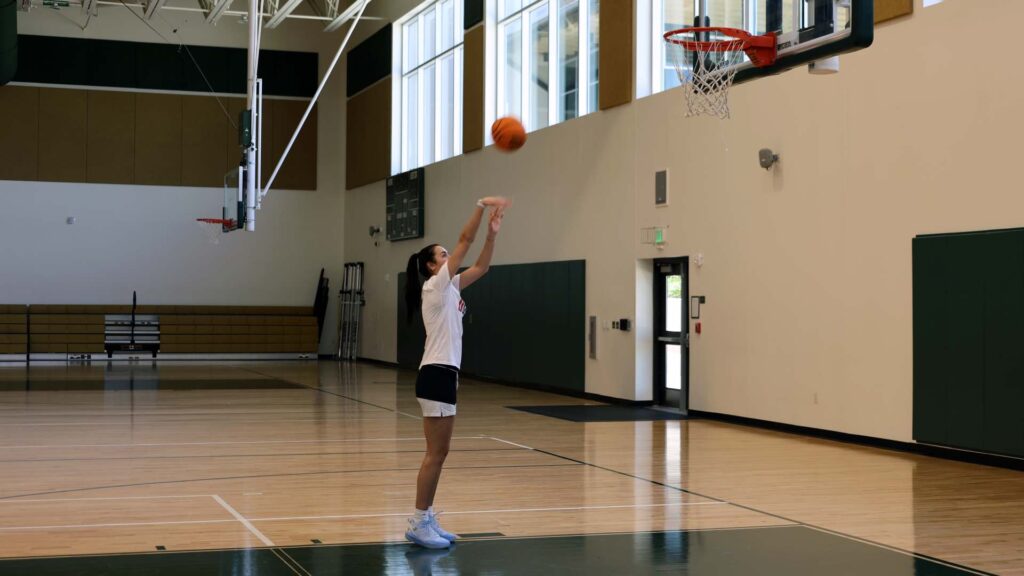
After more than a year of heartbreak and frustration, Caroline and her family decided to explore a new path: treatment for post-concussion syndrome at Aviv Clinics. What happened next changed the course of both her basketball career and her life.
What Is Post-Concussion Syndrome — and Why Is It So Hard to Treat?
For most people, concussion symptoms gradually subside over the course of a few weeks. But for some like Caroline Ducharme, these symptoms persist and evolve into post-concussion syndrome (PCS).
PCS is a complex neurological disorder in which the brain doesn’t fully recover from its injury. People with PCS may experience a mix of symptoms that linger for months or even years, including:
- Recurring Headaches and migraines
- Dizziness and balance issues
- Mental fatigue, brain fog
- Cognitive challenges including memory problems and attention issues
- Sleep disruptions (insomnia or sleeping too much)
- Emotional symptoms such as depression, anxiety and mood swings.
These symptoms and others often fluctuate, intensify with activity, and resist traditional treatment.
While many therapies for PCS and mild traumatic brain injuries (TBIs) focus on managing symptoms, few address the underlying disruptions in brain function. Studies suggest that lingering concussion symptoms may result from impaired blood flow and oxygen delivery in the brain — disrupting the brain’s ability to function and heal. Standard imaging tests like CT scans and MRIs can miss these subtle changes.
What Is Post-Concussion Syndrome — and Why Is It So Hard to Treat?
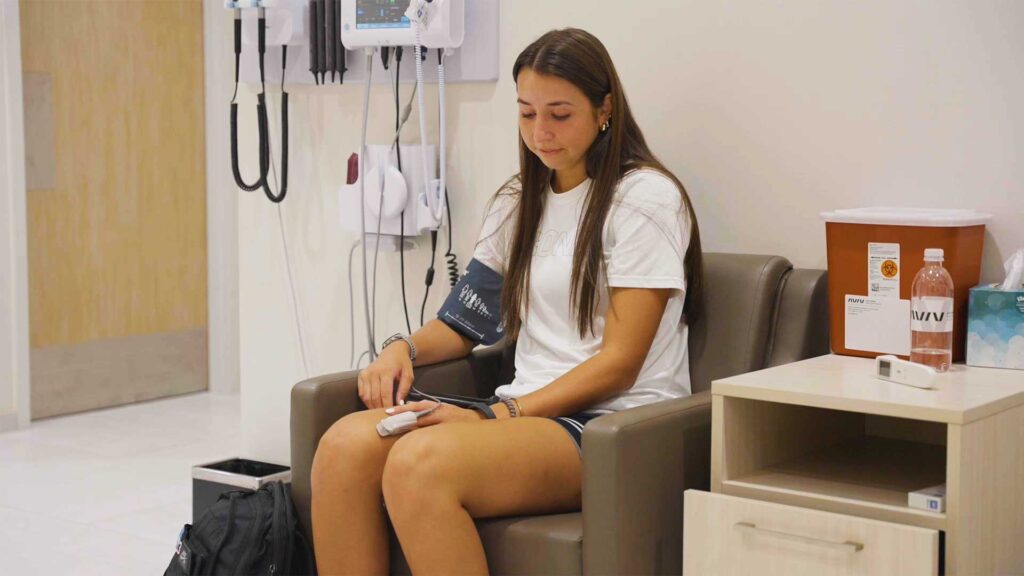
Recovery can be even more challenging for people who have experienced multiple concussions over time. Repeated head injuries can cause cumulative damage and significantly hinder the healing process.
That was part of the reason Caroline’s case was so complex: her brain injuries had stacked up, and her symptoms were no longer following a predictable path.
“Multiple concussions accumulate. It’s not like you have one, you recover, and you completely start from normal when you have the next one,” explains Amir Hadanny, MD, PhD, Aviv Clinics’ chief medical officer and head of research. “When subsequent injuries occur, the brain is more vulnerable, leading to more severe and lasting consequences. This is what we see in Caroline’s case.”
Despite top-tier medical support, Caroline Ducharme’s concussion symptoms didn’t improve. Like many people with PCS, she wondered if she would ever feel like herself again.
That’s what ultimately led Caroline and her care team to consider a different path: one focused on restoring brain health at its core.
Discovering Aviv Clinics: A New Path to Post-Concussion Recovery
When Caroline and her family arrived at Aviv Clinics in central Florida, they were searching for more than symptom relief. They wanted answers and results.
To fully understand Caroline’s challenges, the Aviv Clinics team performed the most thorough medical assessment Caroline had ever received, including:
- High-resolution MRI imaging, followed by
- High-resolution SPECT imaging to measure brain structure and activity
- Scientifically validated objective cognitive testing to measure attention, memory, focus, and processing speed
- Extensive blood tests to examine potential biomarkers
- Gait, power, and balance analysis to evaluate motor function
- Cardiopulmonary exercise test to evaluate endurance, heart, lungs, and muscles.
Caroline’s testing confirmed decreased function in some areas of her brain, confirmed by both imaging and cognitive testing.

“When we see decreased functioning in multiple areas of the brain, it makes it harder to think through things, to make sense of things,” explains Aviv Clinics head of neuropsychology, Roger Miller, PhD. “And we saw this in her testing, that her processing speed was slow. This is extremely common with concussive injuries.”
After a comprehensive review of her assessment results, the clinical team at Aviv determined that they could make a difference for Caroline, but it would take time.
A Personalized Treatment for Post-Concussion Syndrome
Armed with a detailed understanding of Caroline’s condition, Aviv’s clinical team of physicians, neuropsychologists, physiologists, physical therapists, and other professionals crafted her personalized medical program. Over the next 12 weeks, Caroline committed to a comprehensive regimen of evidence-based therapies, including:
- A scientifically-backed hyperbaric oxygen therapy (HBOT) protocol
- Cognitive exercises and dual-task training
- Physical training and physical therapy
The Aviv Medical Program isn’t a passive therapy or medication that offers instant relief. It requires time and work. As an elite athlete, Ducharme embraced the challenge.
“It’s been really challenging. I didn’t think it would be this hard,” she admitted. “I come home and I’m exhausted and I didn’t really sweat. It’s a different type of exhaustion.”
How Hyperbaric Oxygen Therapy and the Aviv Medical Program Support Brain Recovery
The Aviv Medical Program is rooted in the science of neurorehabilitation and brain plasticity. By breathing 100% oxygen in a pressurized environment, Caroline dramatically increased the amount of oxygen delivered to her brain tissue. This promotes the growth of new blood vessels, reduces inflammation, and helps restore function in damaged areas of the brain.
But her two-hour HBOT sessions were only one element of the program. Every day, she met with specialists focused on helping her make the most of these improvements. Customized nutritional guidance, neurocognitive training and physical therapies helped Caroline:
- Improve cognitive speed and clarity
- Reduce headaches and visual disturbances
- Enhance balance and coordination
- Increase energy and stamina
- Elevate mood and emotional resilience
“Brain recovery is hard work. It doesn’t end in a week or two,” says Dr. Hadanny.
“It takes time to create new pathways and new blood vessels. The brain needs time to establish new neural pathways and develop new blood vessels—a complex process that can’t be rushed. Patients often find this journey frustrating because progress isn’t linear. There are inevitable setbacks and breakthroughs, but the overall trajectory is always upward.”
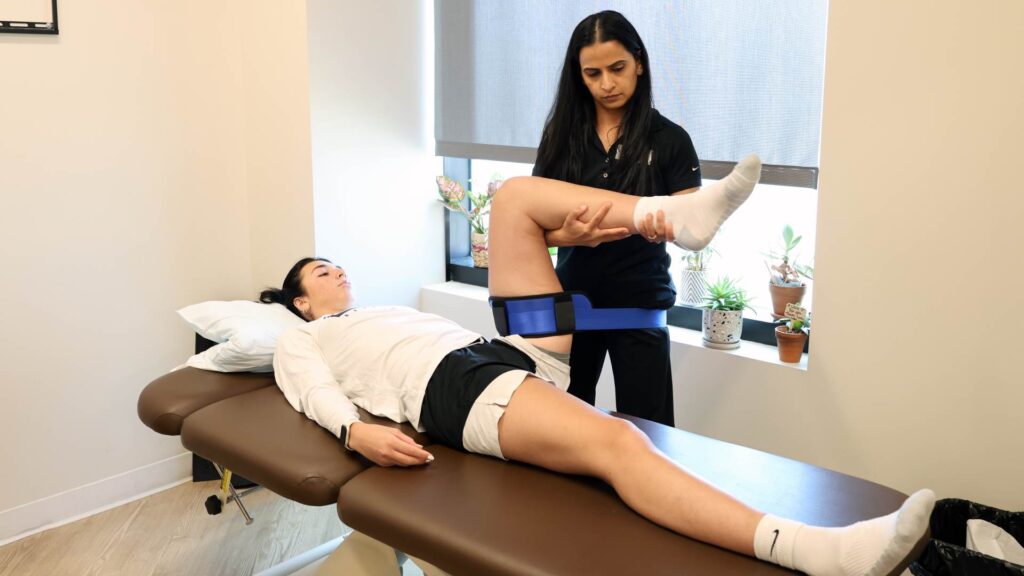
Over time, Ducharme’s symptoms began to ease, and she started to feel more like herself — physically, mentally, and emotionally.
“Coming in, I was definitely a little hesitant to get my hopes up,” Caroline admits. “Now I have a newfound hope for getting back into basketball… and being able to be the player I was, the person I was.”
While Caroline was healthier and more hopeful after finishing the program, she still wasn’t ready to compete. She spent the following months continuing her rehab and gradually rebuilding her confidence and stamina.
The Next Chapter in Caroline Ducharme’s Concussion Recovery Story
By the end of the 2024-2025 college basketball season, Caroline had made enough progress to join her teammates on the court. She made her season debut late in a blowout win against Butler, more than 15 months after her last on-court appearance.

As UConn pushed through the Big East championship and the NCAA women’s tournament, Caroline’s on-court minutes were limited, but her presence was powerful. At the end of the season, she was finally able to achieve one of her lifelong goals, lifting a national championship trophy.
For the first time in nearly two years, she sees a path forward. She recently announced that she’ll return to UConn for her senior season, proof that she believes her dreams of a professional basketball career are still within reach.
“I’m definitely happy with where I am but I’m continuing to get better,” Caroline told CBS Sports in an April 2025 interview. “This is not where I want my story to end.”
A Path to Recovery From Chronic Concussion Symptoms
Although Caroline Ducharme’s story is still unfolding, she’s now back on the court, back in the classroom, and back to pursuing her goal of a professional career in basketball. Her experience is a reminder that recovery from post-concussion syndrome is possible, even after months or years of suffering.
At Aviv Clinics, our evidence-based program is designed to treat people who want answers, real improvement, and the chance to reclaim their lives. Our unique combination of in-depth assessments and multidisciplinary therapies offers hope for people with lingering concussion symptoms.
If you or someone you love is struggling with post-concussion syndrome, contact Aviv Clinics today to schedule a complimentary consultation and discover whether our personalized treatment program is right for you.
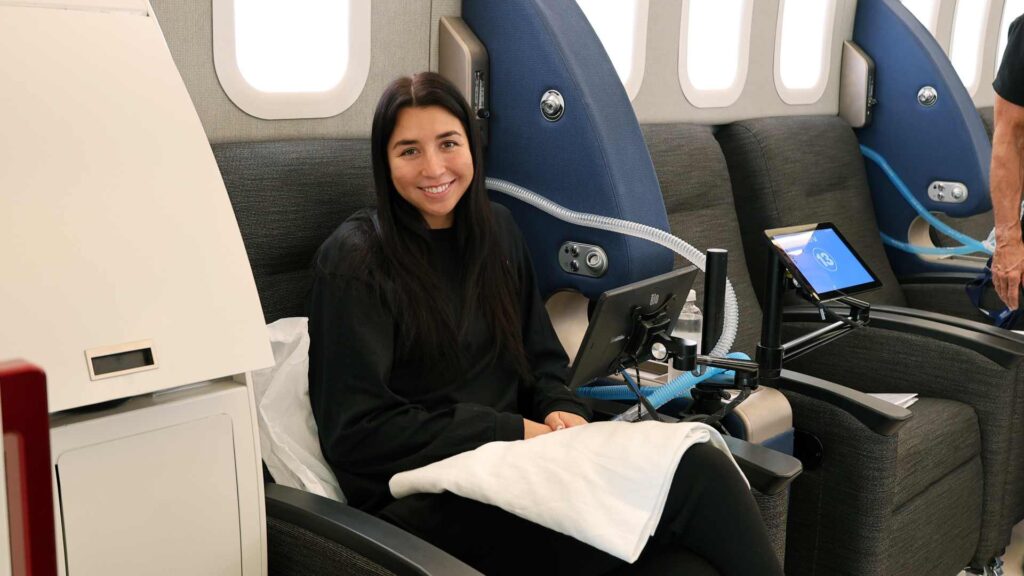
Surviving Carbon Monoxide Poisoning: Long-Term Damage Explained
The silent aftermath of carbon monoxide (CO) exposure can catch survivors off guard. While acute CO poisoning is often recognized and treated immediately, exposure to CO over an extended period or substantial exposure can create chronic cases, which present different challenges. Many survivors feel disoriented, struggle with simple tasks, and experience fatigue that never seems to lift. This is the reality of carbon monoxide poisoning’s long-term damage.
Exposure to this colorless, odorless gas carries the potential for long-term health complications. When inhaled, carbon monoxide readily binds to the hemoglobin in red blood cells, blocking oxygen from reaching vital organs—especially the brain. Oxygen deprivation can lead to health issues that persist for months or even years.
Whether you’re a survivor or a loved one, know there is hope on the horizon. Understanding chronic carbon monoxide poisoning and its treatment options is the first step on the path toward healing.
Long-Term Effects on the Brain
The brain is a powerful yet highly sensitive organ, particularly vulnerable to oxygen deprivation. When carbon monoxide robs the brain of oxygen, it can lead to hypoxic or anoxic brain damage, which can occur “whenever oxygen delivery to the brain is compromised.” The resulting damage to brain tissue can resemble that seen in the brain scans of traumatic brain injuries and can have both immediate and long-lasting effects.
In the acute stage of CO poisoning, the brain experiences immediate distress, with symptoms such as:
- Confusion
- Dizziness
- Headaches
- Brain fog
- Loss of consciousness
Quick intervention can help mitigate these initial symptoms, but even after treatment, many patients see long-term carbon monoxide poisoning effects on the brain, some of which appear well after initial exposure. Delayed neuropsychiatric syndrome (DNS) ”develops in up to 50% of adult survivors.”
The damage to the brain can manifest in many different ways, affecting cognitive ability and neurological functioning.

Cognitive Impairments
One of the first signs of acute CO poisoning is brain fog. For chronic carbon monoxide poisoning survivors, this fog never completely goes away.
Survivors may also experience:
- Memory loss
- Difficulty concentrating
- Problems with executive function
These symptoms may become constant, frustrating companions. It can be challenging for some to remember recent events or even access long-term memories.
Simple tasks that once came naturally may require intense concentration to complete. It’s as if the brain’s filing system becomes jumbled, making information retrieval a frustrating and often fruitless experience.
Mood and Behavioral Changes
Studies show it’s not uncommon for patients to experience personality changes as well as “prominent depression, anxiety, and irritability several years after accidental CO poisoning.”
In some cases, the symptoms of resulting mood disorders can mimic the symptoms of cognitive decline, including trouble with memory, attention, and concentration. Patients may also become socially detached or demonstrate emotional instability in the wake of CO poisoning.
Neurological Disorders
One major reason CO poisoning is so concerning is that the “chronic stage includes progressive neurological decline,” especially if left untreated.
As a result of a disruption in the brain’s delicate balance, some CO poisoning survivors develop parkinsonism, or a set of neurological issues reminiscent of Parkinson’s disease. Symptoms like tremors, rigidity, and movement difficulties can make even holding a morning cup of coffee a significant challenge.
Long-Term Effects on the Heart and Other Organs
The brain may bear the brunt of carbon monoxide poisoning’s long-term damage, but other vital organs don’t always escape unscathed. The pervasive nature of carbon monoxide poisoning’s chronic impact on the body means multiple organ systems can experience a complex array of health outcomes.

Cardiovascular Damage
The heart depends on a steady supply of oxygen to function optimally. When this supply is disrupted by CO exposure, survivors may find themselves at an increased risk of heart conditions, as “myocardial tissue is highly sensitive to oxygen deprivation.”
CO poisoning can accelerate the formation of plaque, disrupt the heart’s electrical system, and damage muscle cells. Resulting heart conditions can include:
- Arrhythmias
- Pulmonary edema
- Heart attack
- Heart failure
Research suggests that chronic CO exposure may increase oxidative stress and affect the heart’s structure and function, which could increase the risk of cardiac events in the future.
Impact on Other Organs
Beyond the heart, other organs and bodily systems can face challenges after CO poisoning:
- The kidneys, tasked with filtering blood, can struggle to function, which may lead to renal damage. After CO poisoning, patients experience a “6.15-fold increase in the risk of developing” chronic kidney disease.
- The liver, the body’s chemical processing plant, can experience dysfunction, which may further compromise overall health. Dysfunction following CO poisoning is mainly “caused by insufficient oxygen uptake” by cells in the liver.
- The endocrine system regulates hormones and the body’s stress response. Some patients with CO poisoning face a significant “risk for adrenal insufficiency,” affecting stress management, blood pressure, and energy levels.
The interconnected nature of the body’s systems means that damage to one organ can have wider effects. This underscores the importance of a holistic approach to chronic carbon monoxide poisoning treatment.
Long-Term Effects on Overall Health
The ripple effects of CO poisoning extend beyond specific organs, impacting overall health and functionality in profound ways. It’s common for survivors to find themselves facing a complicated web of symptoms that affect every aspect of their day-to-day life.
The cumulative impact of chronic carbon monoxide poisoning can cause a dramatic shift in quality of life. These effects include:
- Persistent Fatigue and Weakness: This fatigue is described as more than just tiredness; it’s a bone-deep exhaustion that drains energy and vitality. Some survivors even develop the symptoms of chronic fatigue syndrome (CFS).
- Physical Limitations: Many people find themselves facing varying degrees of physical disability and having a hard time performing actions that once came easily.
- Dependence on Others: Some may become reliant on loved ones or caregivers for tasks they previously managed independently, which can affect their self-esteem and sense of autonomy.
- Psychological Toll: The struggle with chronic symptoms can lead to grief over the loss of abilities and feelings of depression and isolation..
- Identity Reevaluation: Living with these symptoms may cause a person to reevaluate their identity and place in the world or redefine what success looks like on a daily basis.
Despite these challenges, it’s vital to note that, with the right treatment approach, survivors of carbon monoxide poisoning’s long-term damage can adapt and thrive. Comprehensive, extended care that addresses not just the symptoms but also the root causes can offer a greatly improved quality of life.
Chronic Carbon Monoxide Poisoning Treatment: Offering Much-Needed Hope
If your outlook appears bleak, know that hope is not lost. Innovative chronic carbon monoxide poisoning treatment offers a lifeline for those grappling with the long-term impact of CO exposure.
While acute treatment focuses on immediate stabilization, treatment for chronic carbon monoxide poisoning seeks to address damaged tissues and promote healing for lingering effects:
Acute CO poisoning treatment:
- Focus: Immediate intervention
- Timeframe: Within hours or days of exposure
- Primary Goal: Rapidly remove CO from the bloodstream
- Method: High-flow oxygen therapy, supportive care (IV fluids, monitoring)
Chronic CO poisoning treatment:
- Focus: Addressing long-term effects and promoting healing of damaged tissues
- Timeframe: Within weeks, months, or even years after exposure
- Primary Goals: Improve cognitive function, reduce neurological symptoms, enhance quality of life, address secondary health issues
- Method: Advanced hyperbaric oxygen therapy, comprehensive neurological and cognitive assessments, personalized nutrition coaching, and cognitive and physical training programs

Hyperbaric oxygen therapy (HBOT) has long been recognized as an effective treatment for acute CO poisoning because it floods the body with the vital oxygen it needs to stabilize. However, advanced HBOT can also address the complex needs of chronic CO poisoning patients.
In the chronic phase, peer-reviewed, published research shows that a specific, unique HBOT protocol offers immense promise in helping the brain and body recover from CO poisoning:
- In patients with anoxic brain injury, as often seen in chronic CO poisoning cases, studies show this specific HBOT protocol offers an “improved ability to perform the activities of daily living and quality of life.”
- Research indicates HBOT “decreases the severity of impairment” in patients with symptoms of delayed neuropsychiatric syndrome (DNS) after CO poisoning.
HBOT floods the body’s tissues with oxygen, which helps restore the oxygen balance in the blood, promote healing, and reduce the risk of long-term damage from carbon monoxide exposure. Yet, not all HBOT protocols support recovery in the same way.
In this advanced HBOT protocol, available through the Aviv Medical Program, high concentrations of pure oxygen delivered with fluctuating pressure levels:
- Stimulate the growth of new blood vessels
- Encourage neurogenesis (the growth of new brain cells)
- Reduce inflammation
- Support the regeneration of damaged tissues
This comprehensive approach not only addresses brain health but also supports recovery in other affected body systems, including the heart and other organs.
The Aviv Medical Program
The Aviv Medical Program offers a path forward for those who may have lost hope after initial treatments failed to provide relief.

Because chronic carbon monoxide poisoning affects multiple body systems, the Aviv Medical Program takes a holistic approach tailored to each patient and can incorporate:
- Comprehensive neurological assessments
- Personalized nutritional guidance
- Cognitive training
- Physical therapy and training
- Advanced HBOT sessions
The Aviv Medical Program can address multiple challenges faced by chronic CO poisoning patients, including:
- Tailored nutrition, training, and HBOT to support energy levels
- Therapies to enhance daily living skills
- Cognitive training to improve mental capabilities
- Coaching and support that considers the patient’s individual goals
Developed over a decade by a team of medical experts, this multifaceted, personalized approach ensures the secondary impacts of chronic carbon monoxide poisoning receive appropriate care.
Find Healing from Long-Term Carbon Monoxide Poisoning Effects
If you’re struggling with the long-term effects of carbon monoxide poisoning, know that Aviv understands the unique chronic challenges faced by carbon monoxide poisoning survivors. Through the Aviv Medical Program, it’s possible to unlock your body’s natural healing potential and take back the life you deserve.
If you’re affected by long-term symptoms of carbon monoxide poisoning, we encourage you to contact Aviv Clinics. Together, we can talk about treatment options and map a course toward a healthier future.
Innovative Anoxic Brain Damage Care: The Power of Hyperbaric Oxygen Therapy
NOTE: Anoxic brain damage is a medical emergency that can result in tragic outcomes, including coma or death, if not treated promptly.
Every year, thousands of individuals face the difficult consequences of oxygen deprivation to the brain, leading to what is known as anoxic brain damage (also called cerebral hypoxia). This challenging condition results from numerous circumstances, including cardiac arrest, carbon monoxide (CO) poisoning, and disruptions in breathing caused by incidents like choking or smoke inhalation. The effects can be profound, but there is reason for optimism.
Cardiac events are a primary cause of oxygen deprivation. According to the CDC, “about 805,0000 people in the United States have a heart attack [each year].” While we often focus on the heart’s recovery following cardiac arrest, it can have an equal impact on the brain. Researchers found “cognitive impairments after OHCA [out-of-hospital cardiac arrest] are common and affect up to 50% [of patients].”
These impairments often manifest through anoxic brain injury symptoms such as diminished visual perception, cognition, expression, and more. These changes can feel overwhelming regardless of the cause—whether a heart attack, a non-fatal drowning, or another traumatic brain injury. The effects on the brain—and impact on one’s quality of life—can be similar, even when the initial causes differ.
Fortunately, scientific evidence offers hope for anoxic brain injury treatment. At Aviv Clinics, we’re committed to exploring these cutting-edge resources and tools to unlock this potential and support the journey to recovery. Keep reading to learn more.

What Is Anoxic Brain Damage?
Anoxic brain damage occurs when there is a lack of oxygen to the brain. Science shows that “after approximately four minutes of oxygen deprivation,” brain cells begin to die, potentially leading to severe anoxic brain injury and its profound effects.
Here’s why anoxic brain injury occurs:
- Blood carries oxygen to the brain for energy.
- Certain conditions cause the blood flow to slow or get blocked.
- Lack of blood flow starves the brain of oxygen, leading to cell damage and death.
To perform its vital functions, the brain requires “20% of the body’s total oxygen supply even though it only makes up for 2% of the body weight.” Understanding these mechanisms—and the importance of oxygen in the brain—helps illustrate the gravity of scenarios that can result in anoxic brain injury.
Causes of Anoxic Brain Damage
Anoxic brain injuries result from various situations that disrupt oxygen to the brain, such as:
- Cardiac arrest
- Blood clot
- Stroke
- Non-fatal drowning
- Choking or strangulation
- Severe asthma attack
- Severe blood loss
- Exposure to toxic substances (e.g., carbon monoxide)
- Smoke inhalation
- Complications during general anesthesia
- Drug overdose
- High altitude sickness (where oxygen is lacking)
These events, as well as any other that prevents oxygen-rich blood from reaching the brain, can result in moderate to severe anoxic brain injury.

What Are Symptoms of Anoxic Brain Injury?
Given the potential for life-altering effects, any suspected case of anoxic brain injury should be treated with urgency.
Recognizing anoxic brain injury symptoms early is vital to potentially improve prognosis, but the signs can vary widely depending on the severity and the duration of oxygen deprivation.
Common symptoms of anoxic brain injury may include:
- Headaches
- Difficulties with thinking, focusing, and memory
- Mood swings
- Changes in sleeping patterns
- Vision problems
In cases of severe anoxic brain injury, additional symptoms may manifest:
- Disorientation
- Difficulty with coordination and balance
- Weakness or paralysis in limbs
- Speech and language difficulties
- Sensory disturbances
- Seizures
- Loss of consciousness
The onset of these symptoms differs from person to person. Some may experience instant and obvious signs of injury, but for others, symptoms can appear gradually over time—even weeks after the triggering event.
Recovery can be long and challenging, but many patients make significant improvements with appropriate care.

What Is the Life Expectancy After an Anoxic Brain Injury?
Because each case is unique, and modern medical advancements have improved outcomes for many patients with anoxic brain damage, life expectancy after an anoxic brain injury can vary significantly. One systematic review of medical literature revealed that, on average, the “pooled rates of mortality [vs.] any clinical improvement” in patients with severe anoxic brain injury are equally likely at 26%.
This indicates that some patients with anoxic brain injury may have a reduced life expectancy, yet others can live for many years with proper care.
It’s worth noting that these figures don’t account for all patients. Individual prognosis can be challenging, and each case must be uniquely evaluated.
Use of HBOT in Improving Brain Function
Hyperbaric oxygen therapy (HBOT) is emerging as a promising medical solution for anoxic brain damage. This therapy elevates oxygen levels in the body up to 20 times higher than normal. This effect increases the amount of oxygen in the blood, providing the energy the brain and body need to activate and accelerate self-healing mechanisms.
What Research Says
A study from the journal Restorative Neurology and Neuroscience offers encouraging insights into the potential of hyperbaric oxygen therapy for anoxic brain injury treatment. The research reports HBOT “can induce neuroplasticity and improve cognitive functions of patients suffering from anoxic brain damage” caused by cardiac events. Remarkably, this is valid many months—and sometimes years—after the cardiac event.
While this particular research focuses on anoxic brain injury resulting from cardiac arrest, it’s vital to note that the HBOT’s ability to enhance oxygen delivery to damaged tissues can offer benefits across different types and causes of anoxic brain injury.
Research Conclusion
One of the biggest takeaways from this research is that, despite a lengthy period following the cardiac event, HBOT treatment showed substantial impact on the patients’ cognitive abilities:
- Clinical changes were assessed through neurocognitive assessments. These tests showed a distinct correlation between the recorded results and improvements in quality of life and the ability to undertake daily activities.
- HBOT “was found to induce modest, but statistically significant improvement in memory, attention and executive function.”
- According to the scientists behind the study, HBOT is able to reactivate neuronal activity by increasing plasma dissolved oxygen. This approach delivers oxygen to the brain in a highly efficient manner.
These observed benefits have implications for different types of anoxic brain damage. HBOT could be an enhanced therapy solution for anoxic brain injury patients, especially those with the appropriate profile.
HBOT and Neuroplasticity
Hyperbaric oxygen therapy’s impact on neuroplasticity—the ability to form new neural connections—is especially promising. Studies show that HBOT has the potential to “induce neuroplasticity months to years after [an] acute injury,” with significant improvements noted in “information processing speed, visual spatial processing, and motor skills.”
This suggests that because it may essentially rewire the brain to compensate for damaged areas, utilizing hyperbaric oxygen therapy for anoxic brain injury could lead to improved cognitive function and quality of life for those affected.
As research continues to evolve, HBOT presents a hopeful avenue for those dealing with the challenging effects of anoxic brain damage.

Hyperbaric Oxygen Treatment for Brain Injuries
In addition to anoxic brain damage, other types of brain injuries may benefit from hyperbaric oxygen therapy. This versatility makes HBOT a potentially valuable option for not only improving symptoms and life expectancy after anoxic brain injury but also addressing a wider variety of brain injury symptoms stemming from alternative causes.
For example:
- Traumatic Brain Injury: One study reports, “In children with traumatic brain injury (TBI), the addition of HBOT significantly improved outcome and quality of life and reduced the risk of complications.” As it is definitely possible to have a TBI and not know it, further research notes HBOT can “improve post-concussion syndrome years after mild traumatic brain injury.”
- Post-Stroke Recovery: Another research study conducted HBOT on post-stroke patients in the chronic stage between 2008–2018. Results concluded that:
- “HBOT induces significant improvements in all cognitive domains even in the late chronic stage.”
- “HBOT induced a significant increase in all the cognitive function domains…with 86% of the stroke victims achieving [clinically significant improvements].”
- Long COVID Symptoms: In a study that conducted HBOT on 73 long COVID patients with “persisting physical, neurocognitive, and neuropsychological symptoms,” clinical outcomes illustrated “significant improvement in brain MRI perfusion and microstructural changes” in numerous areas of the brain
Research continues to reveal HBOT’s efficacy across different conditions, including severe anoxic brain injury and beyond. As science progresses, the potential applications are expanding to encompass critical brain injuries, offering new hope for recovery and rehabilitation.
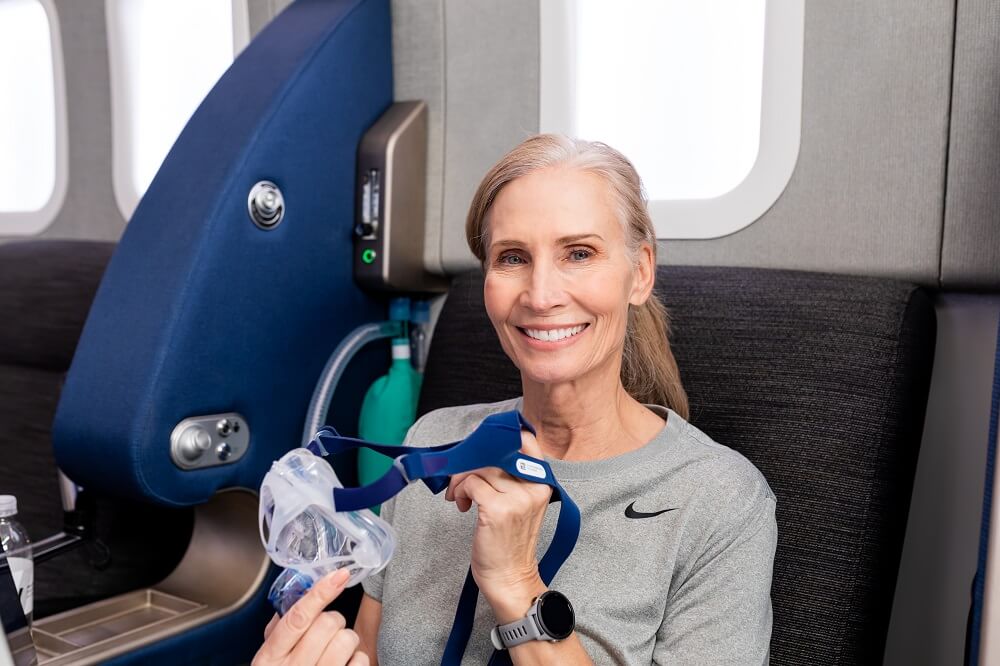
Explore Advanced Treatment for Anoxic Brain Injury with Aviv Clinics
Anoxic brain damage introduces a host of challenges, and our compassionate team is dedicated to supporting you on your journey to recovery.
We’ve seen firsthand how a unique, highly-advanced, holistic, and personalized approach makes a measurable difference in enhancing overall quality of life. Through the comprehensive Aviv Medical Program, which can include several therapies including a unique hyperbaric oxygen protocol based on decades of research, we not only treat symptoms—we unlock the potential for renewed cognitive function and vitality in the face of anoxic brain damage.
Whether you’re grappling with recent, severe anoxic brain injury or symptoms you’ve dealt with long-term, we’re here to support you. Contact our clinic for more information or to schedule a consultation. Your journey toward healing begins here.
Elevating Holiday Joy: Overcoming Seasonal Blues and Stress
As the holiday season draws near, many of us look forward to a season celebrating family, friends, and fellowship. As uplifting as the winter holidays can be, they can also bring stress, fatigue, anxiety, and depression.
It’s tempting to write these feelings off as the “holiday blues,” but mental health concerns are very real, and can manifest either as temporary challenges or chronic conditions. In fact, you or someone you love has very likely struggled with mood disorders or other mental health challenges recently. According to the National Institutes of Health, about 20% of adults in the U.S. have experienced some form of mental illness in the last year.
The Connection Between Brain Health and Mental Illness

While any of us can experience a mental health disorder, certain people are more susceptible. These include people experiencing stress such as the death of a loved one or decline in personal health, as well as those with a family history of mental illness, drug or alcohol abuse, or a personal history of abuse or neglect. Also at risk are people who have experienced a traumatic brain injury (TBI) or concussion, especially if the brain injury affects areas of the brain that regulate behavior and emotion.
At Aviv Clinics, our clients are often surprised when we inform them that their depression, anxiety, or other psychological challenges may be the result of a TBI or concussion, even if the initial injury happened decades ago.
Most of us understand that brain injury can result in physical and cognitive impairments. However, there is less awareness of the mental health issues that can also result from a brain injury. These mental health implications can also have a significant negative impact on the quality of life for a concussion or TBI survivor.
Emotional Changes After a Brain Injury
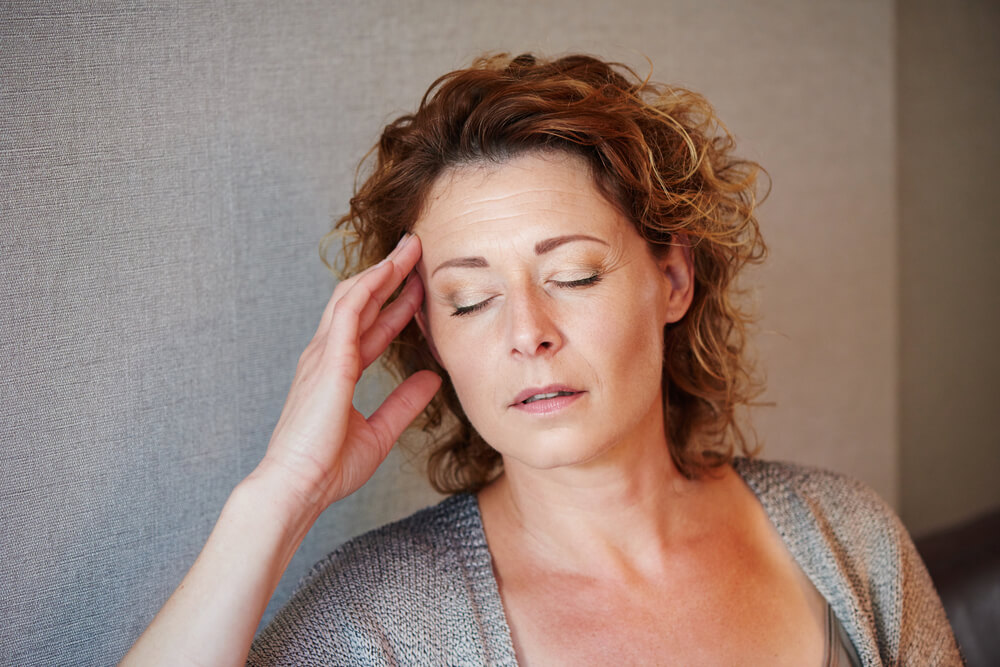
Behavioral and emotional symptoms that can emerge after a concussion or TBI include:
- Anxiety
- Depression
- Mood swings
- Irritability
- Change in sleep patterns (too much or too little)
- Post-traumatic stress disorder (PTSD), and more.
Just how common are mental health disorders following a mild head injury? One study published in JAMA Psychiatry revealed that one in five individuals may experience mental health symptoms up to six months after a concussion.
Another study published in Frontiers in Neurology found that people who have sustained a TBI are three times more likely to experience depression compared to those without a history of brain injury, and that the risk remains decades beyond the initial brain injury.
Hope for Those Struggling with Psychological Challenges

Innovative therapeutic medical programs that include the use of hyperbaric oxygen therapy (HBOT) are showing that the behavioral and emotional symptoms of brain injuries can be alleviated. A large body of research shows the effectiveness of HBOT for improving brain function and quality of life. In these studies, patients receiving HBOT showed significant improvement in mental health, decreased depression, decreased pain and improvement in other disorders associated with mental health conditions, and overall quality of life. These studies used a unique, evidenced-based HBOT treatment protocol that encourages damaged tissues to regenerate and heal faster, improving chronic impairments in patients with concussions and TBIs, even in brain injuries that are many years old.
My colleagues at Aviv Clinics are proud to be leading the way with a science-based and research-backed medical program designed to help concussion and TBI patients aged 13 and older improve their mental and physical abilities. We are one of the few clinics in the world using the exact protocol that researchers proved effective to treat TBI and concussion.
Managing Mental Health During the Holidays
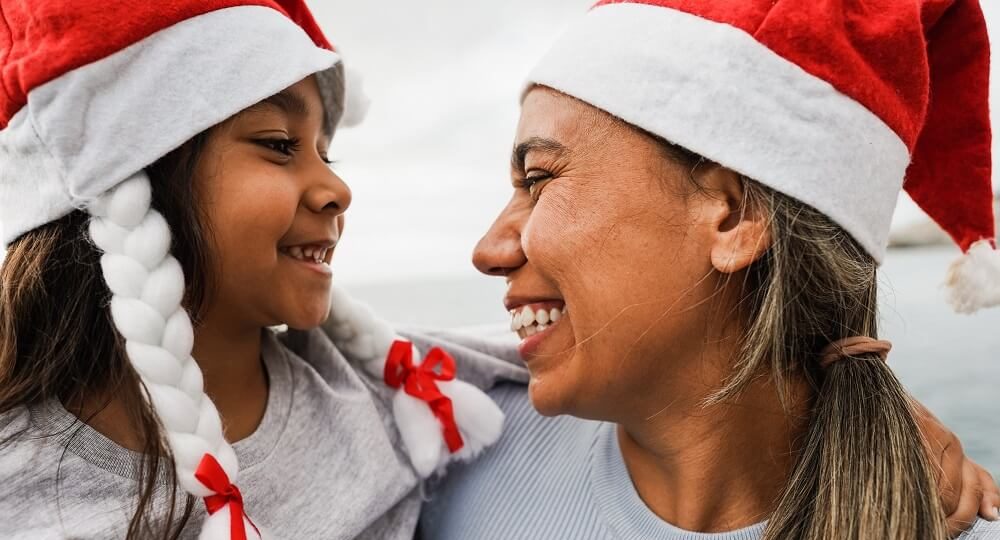
The holidays can certainly be stressful for all of us, but they don’t have to be.
The National Alliance on Mental Illness (NAMI) offers these tips for those struggling with seasonal depression or holiday anxiety:
- Stick to normal routines as much as possible
- Get plenty of sleep
- Take time for yourself, but don’t isolate yourself
- Eat and drink in moderation
- Get some exercise
- Simplify holiday tasks with a to-do list
- Set reasonable expectations and goals for holiday activities
- Set a holiday budget and don’t overextend yourself financially
- Listen to music and find ways to relax
If you or a loved one suffer from chronic behavioral challenges that you think may be related to a past concussion or other brain injury, consider contacting Aviv Clinics to find out how we can help. Physician consultations are complimentary and are available live or virtually.
How to Improve Working Memory and Mental Performance as You Age
As we age, it’s natural for our cognitive abilities to shift. One of the most noticeable areas is in our working memory.
Working memory enables us to carry out complex cognitive tasks. However, its limited capacity means we can only hold a certain amount of information at any given moment.
The good news is we can adopt various strategies and techniques to enhance our working memory and maintain optimal mental performance as we age.
Let’s explore effective methods on how to improve working memory, boost cognitive abilities, and stay sharp. While we cannot control time and aging, we can control the daily habits and activities we decide to pursue.
The medical team at Aviv Clinics is here to get you on track for the journey. Join us for the ride.
What Is Working Memory?
Working memory is a cognitive system that allows us to temporarily hold and manipulate information while performing mental tasks. It plays a crucial role in various cognitive processes, including:
- Reasoning
- Problem-solving
- Language comprehension
- Learning
- Decision-making
Working memory is often seen as the “workspace” of the brain, where information is actively processed and manipulated.
You can think of it as a “sticky note” — your brain holds new information in place so that it can link those details to other information.
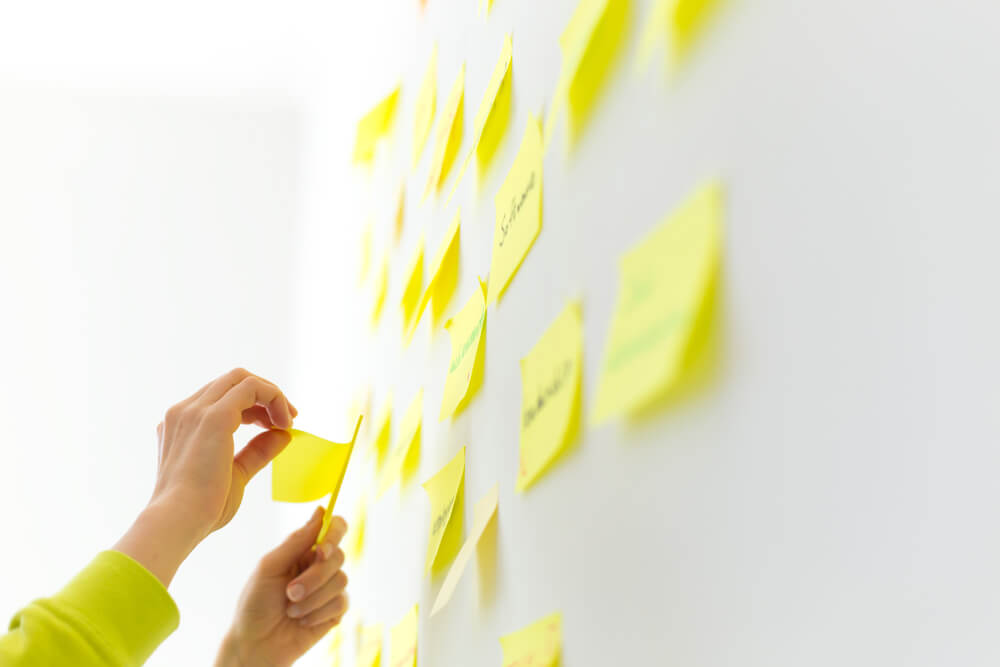
4 Main Components of Working Memory
Working memory has four key components:
1. Central Executive
The central executive is the control center of working memory.
Central executive:
- Allocates attention to different tasks
- Coordinates the interaction between the various components
- Decides how to process and manipulate incoming information
- Plays a critical role in directing attention and managing cognitive resources
Example: You are going for a morning run when your phone rings. You engage in the conversation; the central executive helps you focus on the road ahead more than the conversation.
2. Phonological Loop
The phonological loop is responsible for processing and temporarily storing auditory and verbal information. It is divided into two subcomponents:
- The phonological store (where sounds and speech-based information are held for a few seconds)
- The articulatory rehearsal process (which silently rehearses verbal information to prevent it from decaying).
Example: Continuously repeating an address or phone number aloud to help you remember the information.
3. Visuospatial Sketchpad
The visuospatial sketchpad handles visual and spatial information. It allows us to:
- Mentally visualize objects, scenes, and spatial relationships
- Solve visual and spatial problems, supporting activities like mental imagery and navigation
Example: When you are walking around in the dark, your visuospatial sketchpad pulls up a visual image of your home. This helps you avoid bumping into the table.
4. Episodic Buffer
The episodic buffer is a relatively new addition to the working memory model. It serves as a temporary storage system that integrates information from different sources, combining visual, auditory, and spatial information.
The episodic buffer links working memory with long-term memory. This facilitates a cohesive mental representation of events or experiences.
Example: The episodic buffer can also help you associate specific buildings with locations, which helps you remember a route.

What Happens to Your Working Memory as You Age?
As we age, the brain undergoes structural and functional changes that can affect working memory processes:
- The prefrontal cortex, responsible for working memory, experiences a decline in volume and connectivity.
- Neurotransmitter systems essential for working memory, such as dopamine (a chemical messenger that allows you to feel pleasure, satisfaction, and motivation), may decrease with age.
- Oxidative stress and cellular damage can impair neuronal function (the ability to carry information between brain cells).
- Vascular system shifts can limit the delivery of oxygen and nutrients to brain regions involved in working memory.

12 Cognitive Exercises to Enhance and Preserve Your Working Memory
Cognitive exercises specifically designed to target and preserve working memory can be valuable in enhancing your mental performance.
Here are 12 effective exercises you can try:
- N-Back Training: N-Back is a popular working memory exercise where you recall a sequence of stimuli. Start with a 2-back task, where you identify if the current stimulus matches the one presented two steps back in the sequence. As you improve, increase the difficulty to 3-back, 4-back, and so on.
- Dual N-Back: This exercise combines the N-Back task with a second task, such as tracking visual or auditory patterns while remembering the sequence of stimuli.
- Digit Span Test: Listen to a series of digits and try to repeat them in the correct order. Increase the length of the digit sequence as you improve.
- Letter-Number Sequencing: Given a mixed sequence of letters and numbers, repeat the numbers in ascending order and then the letters in alphabetical order.
- Spatial Memory Games: Play memory games that involve remembering the location of objects on a grid or in a scene.
- Card Pairs Game: Play a classic card matching game where you need to remember the positions of cards and match pairs.
- Sudoku: Solve Sudoku puzzles to challenge your working memory and concentration.
- Chess or Strategy Games: Engage in chess or other strategy games that require you to plan ahead and remember previous moves.
- Dual Tasking: Combine different tasks, such as listening to an audiobook while doing household chores. This exercise challenges your ability to multitask while still retaining important information.
- Recite Backwards: Try to recite strings of numbers or letters backward. This exercise requires active manipulation of information in your working memory.
- Memory Palace Technique: Practice the memory palace technique, also known as the method of loci, to remember lists of items by associating them with specific locations in your mind.
- Verbal Memory Exercises: Read a paragraph or a short passage and then try to recall the key points or details without looking back.
Remember to start with exercises that match your current skill level and gradually increase the difficulty as you progress. Consistency is essential, so incorporate these exercises into your daily or weekly routine.

Unique Hyperbaric Oxygen Therapy (HBOT) Protocol can Improve Memory Function
In addition to diet, quality sleep, and physical and cognitive exercises, scientific research shows that a specific hyperbaric oxygen therapy (HBOT) protocol can improve memory function.
Participants in the study who received the HBOT process, which involved fluctuating oxygen levels according to evidence-backed research, exhibited:
- Better learning curves
- Higher memory resilience
Learn about the unique HBOT protocol
Clarissa Defeats Memory Decline with Aviv Clinics
Rodeo roping and penning champion Clarissa Rainey sustained multiple concussions on horseback, then received an additional concussion in a car accident. She experienced memory loss, which made navigating the ins and outs of her career challenging. For example, tracking the numbers on her horses was difficult. As a real estate agent, she struggled to remember house numbers and addresses, which made her frustrated when doing her job.
Fortunately, she was introduced to Aviv Clinics. Learn about her story.
Take Proactive Measures for Brain Performance
As we age, it is crucial to prioritize the health of our working memory and cognitive abilities. While biological changes can affect working memory, the brain retains plasticity. Proactive measures can be taken to improve and maintain working memory and overall cognitive function.
Learn more about enhancing your performance with Aviv Clinics.
Rising Temperatures and Brain Health:
10 Ways to Stay Safe in the Heat
Hardly a day passes without a worrying story on the news about wildfires, droughts, or mercury-busting temperatures affecting people across the globe on an unprecedented scale.
While most of us are aware of the summer risks of dehydration, heat exhaustion, and skin cancer, brain health often goes unnoticed as a negative side effect of our warming planet. Heat exposure can devastate the human brain and have potentially damaging long-term effects.
It is crucial to understand the effects of hot weather on the body and know how to protect oneself during the peak summer months. This article will explore some practical tips to help you stay safe in the heat.

Effects of Heat Waves
In a heat wave, the brain changes because of the higher temperatures. Recent studies have shown that our globally rising temperatures can lead to cognitive impairments such as difficulties in decision-making and memory.
Hyperthermia, or heat sickness, can cause a range of symptoms including fatigue, difficulty concentrating, migraines, seizures, stroke, and even certain forms of dementia. And as temperatures continue to rise, so does the incidence of hyperthermia. Older adults may be particularly susceptible to its detrimental effects.
Dehydration and heat-related conditions can disrupt the blood flow that supplies essential nutrition and oxygen to our brains.
Furthermore, the inflammation caused by heat stress can contribute to cognitive decline, increase the risk of neurodegenerative diseases, and worsen mental health conditions like anxiety and depression.

Extreme Heat Exposure
With global temperatures increasing in recent years, avoiding extreme heat exposure and keeping cool during summer is more vital than ever. Taking the correct precautions, especially during unusually hot periods or heat waves, will reduce the risk of heat-related conditions including migraines, seizures, stroke, and some forms of dementia, including Alzheimer’s disease.
Following some essential but simple tips can protect brain health during hot spells and heat waves:
10 Ways to Stay Safe in the Heat
- Stay Hydrated – As temperatures soar, keeping your body hydrated is crucial. Drink plenty of water throughout the day, even if you don’t feel thirsty. Opt for water-rich foods like fruits and vegetables to replenish electrolytes and prevent dehydration.
- Dress Right – Wear light-colored, loose-fitting clothing made from breathable materials to stay cool in hot weather. Protect yourself from the sun by wearing a wide-brimmed hat and sunglasses with UV protection.
- Find the Shade – When the heat becomes intense, find shade to take a break from direct sunlight. Whether outdoors or indoors, staying in the shade helps lower your body temperature and reduces the risk of heat-related illnesses. Even carrying an umbrella on a sunny day can help beat the heat.
- Take it Easy Outdoors – During peak heat hours, typically between 10 a.m. and 4 p.m., try to avoid strenuous outdoor activities. If you need to exercise or work outside, do so during the cooler morning or evening hours when the sun is less harsh than mid-day.
- Cool Down Effectively – Use cooling methods like cool showers, damp towels, or fans to lower your body temperature. If you can’t cool down in an air-conditioned area, at least ensure you have a well-ventilated space to prevent overheating.
- Eat Healthy – Boost your brain’s function by eating healthy foods such as fruits, vegetables, whole grains, healthy fats, and lean proteins, like the foods found in the MIND diet.
Foods rich in nutrients support brain health and may even prevent age-related cognitive decline.
- Brain Exercise – Stimulate your brain regularly with puzzles, games, or activities that require critical thinking and problem-solving. It’s important to keep your mind active to maintain cognitive function, especially during extreme heat.
- Be Prepared – Prepare for upcoming heat waves by keeping an eye on weather forecasts and heat advisories. You should take precautions and protect your brain health in extreme temperatures by planning ahead.
- Screen Time – Too much exposure to electronic devices like smartphones and computers isn’t good during extreme heat. Mental fatigue from excessive screen time may be exacerbated by heat and the effects of excessive screen time on your body.
- Sleep Well – Healthy brains require restful sleep. Create a cool and comfortable sleeping environment to ensure you get enough quality sleep during hot nights (and during the days if you are a napper).
Rising Temperatures and Brain Health
While everyone is aware of the potential consequences of rising temperatures on our ecosystem, many of us don’t recognize the impact extreme heat can have on our brain health. Understanding the risks associated with extreme heat and climate change is not only vital for preserving our planet but also for safeguarding our own overall health, including our brain health.
Aviv’s unique medical program combines hyperbaric oxygen therapy (HBOT) with cognitive training, fitness training, and nutrition coaching to help improve the quality of life for people interested in healthy aging and those wanting to keep their brains sharp for as long as possible.
Contact Aviv Clinic to learn more about the Aviv Medical Program and how it can help improve your cognitive and physical performance.
Senior Moments: How to Counteract Age-Related Cognitive Decline
No matter our age, we’ve all had them. Many of us even good-naturedly rib each other about occasional lapses in memory or focus.
Next Saturday, July 22, is World Brain Day, established to promote the importance of brain health.
Our brains are exceptionally complex and manage everything we experience in life: our actions and reactions, senses, emotions, and how we process the world around us.
Over our lifetimes, our brains change more than any other organ in our body. As we reach our golden years, however, our brains change rapidly and many of us notice negative changes in cognitive skills like memory, attention, and our ability to learn.

Why do these changes occur?
Many factors contribute to brain health, but there are three significant factors I’d like to discuss that can lead to those annoying “senior moments.”
First, our brains begin shrinking long before we reach senior status. Brain volume begins decreasing in our 40s, primarily in the frontal lobe and hippocampus. These areas of our brain are essential for our memories, as well as attention, learning, problem-solving, and even our personalities.
Second, as we age, our bodies become less efficient at dispersing oxygen. While our brains may only account for about 2% of our total body mass, they need about 20% of the oxygen-rich blood pumping through us. As we grow older, our blood vessels can narrow, weaken, or become blocked, limiting blood and oxygen flow and hindering our brain cells’ ability to function.
Finally, the white matter in our brains deteriorates over time. These bundles of nerve fibers pass impulses and information between the different areas of our brains. White matter atrophy slows these lines of communication, impacting how quickly we process information.
Can changes to the brain be stopped?
Some brain atrophy is inevitable. Fortunately, there are many ways to slow the progression of these changes and improve our brain health, no matter our age.
First, take measures to control chronic conditions like high blood pressure, high cholesterol, and diabetes, which all have been linked to cognitive decline. Taking medications as directed, reducing alcohol intake, eating a healthy diet and exercising regularly will both manage these conditions and improve your brain health. And of course, if you smoke, quit now.

Speaking of diet and exercise, both have significant impacts on brain function. The MIND Diet (Mediterranean-DASH Intervention for Neurogenerative Delay) is designed to defer the onset of cognitive decline. This diet is high in omega-3 fatty acids to strengthen brain cell structure, flavonoids for improving blood flow, and antioxidants to reduce the buildup of plaques. Brain foods on this plan also include berries, nuts, olive oil, whole grains and beans.
You might think that exercise is only beneficial for our muscles, bones, and heart, but it’s also essential for brain health.
Cardiovascular exercise gets our blood pumping, feeding our brains with oxygen-rich blood.
Weight and resistance training has been found to prevent hippocampus shrinkage, improving memory and executive function. Both should be part of your exercise routine at least three days a week.

Staying mentally and socially active can also slow the progression of age-related cognitive decline. Learning new skills, playing games like crosswords or sudoku, and spending time with others all help keep our brains active and alert.
Finally, oxygen and blood flow can also be improved through interventions like the Aviv Medical Program, a holistic treatment program that includes nutrition coaching, cognitive exercises, physical training, and a unique hyperbaric oxygen protocol designed for optimizing brain performance.

At Aviv Clinics at the Center for Advanced Healthcare at Brownwood, we specialize in treating age-related conditions. To discover more tips from our clinical team, we invite you to visit one of our event – click here for the full list of events. Or you can contact the clinic and schedule a consultation with one of our physicians.
One of the healthiest agers I know is Dr. Joseph Maroon. At 83 years young, Dr. Maroon is team neurosurgeon for the Pittsburgh Steelers and vice chairman of the Department of Neurological Surgery at the University of Pittsburgh Medical Center. He’s also an eight-time Ironman triathlon finisher and an Aviv Clinics alumnus.
Watch Dr. Maroon’s story:
How the Link Between Exercise and Brain Health Can Boost Cognitive Function
The science is pretty clear: exercising and maintaining good health are some of the best things you can do to keep the body at peak performance. But there are more than a few options out there when it comes to exercising.
Exercise and brain health are closely linked. Researchers have found that regular physical activity can “delay the effects of both physiological aging and pathological neurodegeneration on brain health.”
To take advantage of the interplay between brain health and exercise, it’s important to understand how exercise is good for the brain—and why. Are some forms of exercise better than others when it comes to the brain? Are there right—or wrong—ways to exercise when maximizing brain power? And how does exercise affect the aging brain?
The answers to these questions can help unlock the power of exercise for brain health.

How Cognitive Abilities Change with Age
As we age, a slight level of cognitive decline is inevitable due to the normal aging process. Issues with memory and slower thinking are to be expected. But older adults are also increasingly at risk for mild cognitive impairment, including “conceptual reasoning, memory, and processing speed,” as well as dementia, which includes conditions like Alzheimer’s disease.
While some of the risk factors for these conditions are out of your control, such as age, genetics, and family history, your overall health plays a role, too. In the event of an unexpected incident, such as a stroke, your general health and wellness become focal points for your recovery.
The more proactive you are with your health, no matter your risk factors or circumstances, the greater your investment in your long-term health potential. Basically, staying healthy and active can help protect your brain.
How Is Exercise Good for the Brain as We Age?
Healthy habits, including a nourishing diet and regular physical activity, are critical players in the healthy aging process. Emerging research discovered that exercise is linked to “improved cognitive performance in older adults with and without cognitive impairment.”
These results are promising for anyone concerned about maintaining cognitive and brain health as they age, especially considering the aforementioned risk factors beyond their control. This occurs primarily because exercise impacts the brain on both a short- and long-term basis—with measurable benefits occurring in both instances.
How Are Exercise and Brain Health Linked?
Anytime you exercise, you’re pumping more blood to your brain tissues. Increased blood flow means more oxygen and other nutrients vital for the brain’s functioning.
In response, the brain also cranks out some helpful molecules, many of which “improve cognitive processes and memory.”
Here are just a few benefits of exercise for the brain:
- Neurotransmitters (NTs) like serotonin, norepinephrine, and dopamine are released, improving mood, motivation, focus, attention, and learning.
- Brain-derived neurotrophic factor (BDNF) helps your brain repair and rebuild, creating new neurons and connections.
- Hormones work with BDNF and can boost your mood and mental clarity.
- Endorphins and other molecules are released, helping relieve pain.
- Increased blood flow delivers nutrients and carries away waste products.
- The hippocampus increases in volume.
Two areas of the brain are particularly important when it comes to cognitive decline: the hippocampus and prefrontal cortex (PFC). These areas are the most susceptible to cognitive degeneration or impairment.
1. Hippocampus
The hippocampus, which is responsible for memory and learning, is affected by exercise in a few ways. Studies show that with aerobic exercise, brain matter shows “an increase in volume of the left and right hippocampus,” an area that often declines in volume as we age. The hippocampal decline also occurs significantly with Alzheimer’s disease, which can be “reduced by 25%” for those with the condition. The hippocampus is also where much neurogenesis (creating new brain cells) occurs—at least if you exercise enough!
2. Prefrontal Cortex (PFC)
The other area benefiting directly from exercise is the prefrontal cortex or PFC—the brain’s “CEO,” responsible for most of our executive functions, including decision-making, attention, problem-solving, and goal-setting. Studies show that older adults, in particular, can benefit from exercise due to increased “executive functions mediated by the PFC.”
A Holistic Approach to Exercise and Brain Health
Exercise benefits brain health significantly because it involves so many bodily processes simultaneously.
Exercise, for both your body and mind, is a powerful practice that can help build confidence, aid in recovery, and even help to stimulate processes “related to cell survival and neuroplasticity” (the brain’s ability to change and adapt).
Aviv Clinics clients receiving the innovative Aviv Medical Program optimize their brain health. Their personalized treatment plan can combine cognitive exercises and physical training, nutritional coaching, and Aviv’s unique research-backed hyperbaric oxygen therapy (HBOT) protocol. As part of the program, clients perform dual-task exercises on the cutting-edge h/p/cosmos medical treadmill at the clinic. The combination of physical and cognitive effort maximizes the benefits of the treatment protocol which include: improved memory, attention, focus, information processing and mental clarity.
Lifestyle Matters
Our brains haven’t changed much in the last 50,000 years or so, but our lifestyle certainly has.
In the days of our nomadic, hunter-gatherer ancestors, life was a little more physically demanding—our bodies are designed to move and be active. Sitting, it seems, could be making us sick.
According to LifeSpan Fitness, the average American these days sits for “11 hours a day,” and an estimated 20% of all deaths over age 35 can be attributed to a sedentary lifestyle. Lack of exercise, poor diet, and use of alcohol, tobacco, or drugs are often a starting point. Falling into this sedentary lifestyle can quickly lead to a downward spiral.
What’s the Best Kind of Exercise?
Rest assured, as long as you’re moving your body regularly, you’ll likely see benefits. While all types of exercise have advantages, most studies favor those that elevate your heart rate and maintain it for a time.
Getting oxygen-rich blood pumping to the brain seems to be the best way to reap the benefits of exercise. Therefore, aerobic exercise (or cardio) and weight training are excellent starting places.
Moderate Intensity
The “prescription” for most older adults is to aim to exercise at a moderate intensity for 30-45 minutes, 3-4 times per week. An easy way to keep track of your progress is with a fitness tracker. Find out if a fitness tracker is right for you.
You can measure moderate intensity by keeping your heart going at the optimal rate, in this case, 70-80% of your maximum heart rate. To determine your max heart rate, subtract your age from 220. For example, a 70-year-old woman’s maximum heart rate would be 150. That means that to exercise at the right intensity, she should maintain a heart rate between 105-120.
You should warm up and cool down for aerobic exercise but don’t count that as part of your total. The 30-45 minutes (as prescribed) should all be while your heart rate is at the target rate.
Strength Training
Strength training can also be incredibly beneficial. Sarcopenia, or the loss of muscle mass as you get older, and osteoporosis, a reduction in bone mass over time, are increasingly common in older adults. Muscle-building exercises can help you retain this muscle mass and build strength in both areas of the body.
To get started, stick to a simple program that activates as many muscle groups as possible throughout the week. With strength training, it’s important to choose activities that are not too easy nor too complex and to give yourself at least one day of rest between sessions.
Avoid injuries by focusing on excellent form, whether lifting weights or performing body weight exercises. Always give yourself time to warm up your muscles with five to ten minutes of heart-pumping cardio or warm up sets before diving into any challenging reps or sets.
6 Tips for Getting Started
If you’re like many (if not most) adults, you might be leaning more toward the sedentary end of the activity scale as you grow older. The exercise prescription above is an ideal goal, and it’s used primarily because that’s what they did in studies showing the best outcomes for cognitive health.
However, other studies showed that lower-intensity activities like walking “roughly 6-9 miles per week” and yoga could be beneficial, too.
Even if you’re aiming for that peak exercise intensity, there are many ways to make exercising for brain health fun, easier, and less stressful.
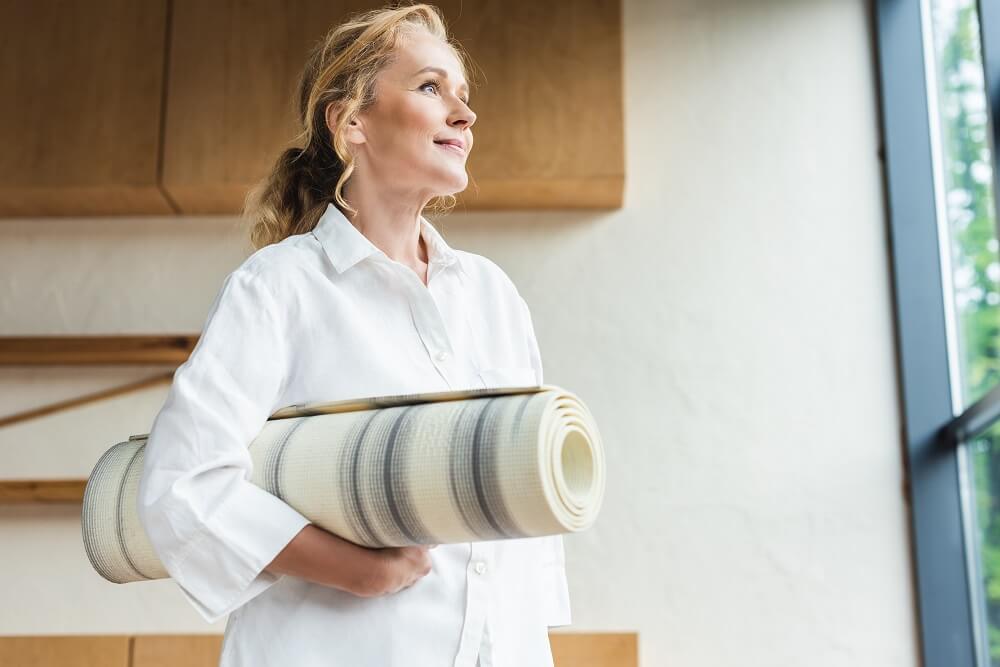
1. Find Movement That You Love
Exercise is about movement, so find a way to move your body that you enjoy. If that’s running laps, great. If you love to dance, then dance! And there are always sports and leisure activities—gardening, golfing, and bowling are excellent ways to move. Even window shopping or hula hooping can count as exercise. Need more ideas? Try any of these non-boring exercises!
Finding enjoyable movement can also help change your perspective and shift away from goals like weight loss that may feel like a chore. Focus on how exercise makes you feel and the enjoyment you get from moving.
2. Slowly Build Stamina
If you’re already pretty active, or you’ve exercised a lot in the past, it will probably be easier for you to start. If you’re not as active as you could be, that’s okay, too. It’s never too late to begin a new exercise practice. Start small and build from there.
You’re more likely to stick with it if you’re realistic about your goals and abilities.
3. Examine Barriers to Habit
Building any habit takes time and planning. Give yourself the best chance at success by looking at exercise through a positive lens. For example:
- If it’s challenging to find time in your schedule, start with shorter movement durations whenever you can.
- If you dislike the gym, identify ways to stay active by doing things you enjoy, whether being outside, working out with friends, participating in low-impact activities, or exercising right at home.
The best plan accounts for daily routine hiccups that could potentially throw your goals off course. By remaining connected to the positive benefits you get right after you engage in physical activity, such as an improved mood, a sense of accomplishment, or a boost of energy, it’s easier to stay on track even when life gets chaotic.
Remember that every day is a new day, and you can always switch things up or make adjustments as you go without throwing in the towel altogether. Slow and steady progress is more sustainable.

4. Work with Your Schedule
Depending on your exercise goals and your current level of physical activity, it’s a good idea to examine how you can build exercise into your routine naturally. From there, you can make goals to build around the momentum you’ve gained with every small step.
When you start to make goals, the SMART goal-setting method can make it easy to visualize where you’d like to go with your exercise routine.
SMART goals are:
- Specific: Break down precisely what you want to achieve. Rather than make a goal to simply walk more, aim for a specific number of steps or a weekly distance threshold you wish to reach.
- Measurable: Find a way to track your goal with metrics. You might use a pedometer to count your steps or a designated app to count the miles you’ve walked.
- Attainable: It’s enticing to think big. Still, you’re more likely to stick to a movement goal if it feels like an achievable first step. Your plan should push your limits just enough to be effective but not too challenging that you feel discouraged.
- Relevant: Consider the benefits you’d like to gain from your goal. If building muscle is your intention, physical activity focusing on endurance training rather than strength training may make progress slower than if you focus on muscle-building exercises.
- Time-bound: Without putting unreasonable pressure on your results, choose a time frame within which you would like to achieve your goal. This can be a particular date or a certain duration. Scheduling can help you take actionable steps every day.
5. Add It Up
Ultimately, it’s about moving more and being more active. There are many ways to sneak in more exercise and break up the sedentary periods. For example, if you sit a lot, you can try setting a timer to get up and walk around every hour. Or start counting your steps and aim to increase them daily.
Many traditional ways to get more activity are still great, like taking the stairs, parking farther away, playing with kids, or doing housework and cleaning. Make it a goal to find a new way to squeeze in some daily activity.
6. Results Take Time—Be Patient
So how long does it take before exercising starts to pay off? While you may feel many exercise benefits immediately afterward, like improvements in mood and energy, lasting results will take longer. Plan on giving it at least six months to assess your brain’s progress.
Regarding cognitive abilities, measuring and assessing can be challenging. You may not notice a substantial increase in cognitive ability. As some cognitive decline will occur due to normal aging, it’s often about slowing it down rather than a full reversal. It’s also common for family and friends to notice a change before you do.
The Bottom Line on Exercise and Brain Health
Find movement that you enjoy, and you’ll have a much easier time making time to exercise. No matter what shape you’re in or what activities you enjoy, you can find a way to optimize both your physical and cognitive health.
Aviv Clinics delivers a highly effective, science-based treatment program to enhance brain performance and improve the cognitive and physical symptoms of conditions such as traumatic brain injuries, fibromyalgia, Lyme, and dementia. Our intensive protocol uses Hyperbaric Oxygen Therapy, physical training, and nutrition management for better brain health. The medical program closely tracks clients’ progress before, during, and after the treatment protocol, using customized tablets and other technology. Based on over a decade of research and development, the Aviv Medical Program is holistic and customized to your needs.
15 Healthy Ways to Handle Stress
Stressed about stress? It may be affecting your brain.
Avoiding stress feels impossible. Humans will inevitably face challenges.
From pandemics to parenting, life has real hurdles to deal with that aren’t going away anytime soon. The good news is that managing stress has less to do with avoiding the things that are stressing us out and a lot more to do with how we deal with it.
When we have healthy ways to handle stress, life’s unavoidable stressors may feel less challenging.
What Is Stress?
Stress is our body’s automatic response to what it perceives as a threat. When we encounter potential stressors, the body releases a hormone called cortisol that quickly travels throughout the body and prepares us to fight, flee, or freeze in the face of whatever stressor is threatening us.

Generally, that’s a very good thing. The system evolved over tens of thousands of years to protect you from threats and keep you alive, whether you’re being chased by a sabertooth tiger, running away from an avalanche, or about to be clubbed on the head by an enemy.
The only problem? While humans have made huge advancements in society and technology in the last 40 or 50 thousand years, that’s just a blink of the eye in terms of our biology. Our brains are operating on outdated software that doesn’t understand how threats to our survival have changed. An argument with a spouse or a looming work deadline isn’t actually going to threaten our survival, but our instinctual brains don’t know that.
Sometimes we need to engage the higher parts of our brain to understand that making a difficult phone call won’t kill us. It only feels that way, and it’s okay to shut down the alert system. The problems start when we’re not able to turn off our internal alarms.
How Does Stress Affect the Body?
Stress can have both immediate and long-term effects on the body. In the short term, you may experience signs like shortness of breath, insomnia, digestive issues, brain fog, and more. There are many ways stress can affect the body in the short term.
How Does Stress Affect the Brain?
As the cortisol hormone surges throughout the body, it affects many different areas. Most of the cells in our body have cortisol receptors, but the brain is particularly packed with them. Stress primarily affects three key areas of the brain:
- The amygdala: controls your fear response and could make you feel constantly on edge
- The hippocampus: affects memory and learning, potentially clouding your thinking
- The prefrontal cortex: the command center of the brain, used for problem-solving and regulating emotions
The effects of stress are so pronounced that they can be seen in brain scans. As your brain responds to stress signals, elevated cortisol levels can impact your cognition. This may make it more challenging to determine how to handle stress and cope with everyday situations.
What’s Going on During a Stress Response?
Once your body turns on the cortisol, several systems essentially go into “emergency mode.” Let’s say you’re hiking, and out pops a big bear. Immediately, cortisol floods the body, reallocating resources as needed to prepare you to fight, flee, or freeze. Utilizing your nervous system, cardiovascular system, metabolism, and more, cortisol helps to supply oxygen and nutrients to areas in need, suppresses the immune system, and modulates things like appetite and satiety, attention, mood, arousal, and vigilance.
However, cortisol conveniently works as a negative feedback loop, meaning that it effectively shuts itself off when levels reach a certain point. Under ideal circumstances, your physical response to stress should reduce or stop once the threat or stressor is removed.
This means that the physiological systems in the body that work together to respond to stress have two jobs:
- to prepare the body to meet the stressor
- to return to normal conditions when the threat is gone.
If it fails to do either of those correctly, the body can be subjected to excessive stress that could have long-term effects on the brain and body.
A landmark study in the 1990s by Kaiser Permanente and the Centers for Disease Control and Prevention (CDC) was done to look at the long-term health effects of adverse childhood events (ACEs). Examples of ACEs were experiencing or witnessing abuse or neglect, witnessing violence, having a loved one die by suicide, or having family members with mental health or substance abuse problems.
The study found that the number of ACEs one accumulated throughout early life directly corresponded to risk factors for a number of what are now typically referred to as stress-related diseases, such as heart disease, obesity, and depression.
Stress Can Be Good
Stress in itself isn’t inherently bad. It mostly represents a heightened state of alertness brought on by the response to stimuli, which can be negative or positive. Stress is “your body’s response to anything that requires attention or action.”

Test anxiety, for example, can improve performance in the right “dose.” If one has so much anxiety that they’re vomiting on their test, their performance will suffer. On the other hand, someone with zero stress about the test may neglect to study at all. But just the right amount of anxiety can prompt us to act.
In this way, stress can motivate us to do something about a situation we want to change.
Change, as it happens, is one of the biggest causes of stress that often goes overlooked, especially when it’s a positive change.
Imagine you just got a big promotion at work—you landed your dream job, which means a move to another state. Your long-term partner decides to go with you and thinks you should get married, so you start looking for houses. Life couldn’t be better, right? So why are you suddenly getting panic attacks?
Any significant change to your routine is inherently stressful, even if it’s exciting. New jobs, big moves, and major life events like weddings and babies may be full of joy, but they still put stress on the body. That means that managing stress means managing all of its forms.

How Can You Treat Stress?
Stress itself may not cause as many health issues as previously thought. Instead, how you react to stress may have a significant impact. While some responses are considered adaptive and have positive outcomes, sometimes we may think we’re handling stress well when it only seems that way.
According to this paper on stress, “what we consider to be an adaptive short-term response may subsequently provoke long-term pathophysiological consequences.”
We all respond to stress in different ways and have varying tolerance levels for stress. The same stimulus can provoke various reactions–what angers some people may cause sadness in others; a stressor that provokes despair from one may inspire perseverance and courage in others.
When it comes to stressful events, how you choose to think about them can impact your health. If you see a potentially stressful event as a negative situation with no possible positive outcome, you may suffer more adverse health effects than if you view the situation as a challenge or opportunity to learn and grow. Thought really can affect your health.
In a study done by Harvard and UCSF, researchers sought to prove the idea of “mind over matter”; that reframing how one thinks about a situation can actually change one’s physiological response to stress.
In this experiment, three groups were exposed to a stressful situation and monitored before and after to judge how well they responded physically to the stress. Before the task, each group was prepared according to the experimental condition:
- One group read information explaining that stress is a natural, adaptive, and harmless response to potential threats and that stress can actually improve performance or response to the stress. It was emphasized that while stress was “functional and adaptive,” it was still stress.
- Another group read information stating the benefits of ignoring or distracting oneself from a stressful situation, effectively instructing them to suppress the anxiety.
- A third control group was given no instruction.
Not surprisingly, the first group showed better outcomes in terms of cardiac and vascular function.
A massive related study of almost 30,000 people confirms this data.
Your perception of how stress affects you can affect your health.
The best health outcomes were observed in those people who did encounter stress but did not consider stress to be harmful. The outcomes were even better for people with no stress at all. Conversely, those who encountered stress and did worry about stress affecting their health showed a 43% increased risk of premature death.

Preventing and Managing Stress
Although we can’t avoid many of the slings and arrows life hurls at us, we can cultivate the conditions that help us mitigate stressful situations. One of the best and still often overlooked strategies is maintaining good self-care. If we’re optimized physically, mentally, and emotionally, we put ourselves on a much better footing for dealing with challenges.
Self-care and stress have an interesting dynamic. Isn’t it strange that when we are under stress and need self-care the most, it seems to become the lowest priority? Imagine you have a ton of work to do, all before the weekend, and I suggest that getting more sleep could help you be productive. “Get more sleep? I can’t do that! Look at all the things I have to do!”
Real self-care is not wine and Netflix binges (even if they are fun in the short term). Proper self-care means actively doing what you need to do to maintain a happy, healthy life: watching your diet (because the gut and brain are closely linked), getting enough physical activity, and simply paying your bills on time. It’s all of the less-than-fun responsibilities that come along with being a functional adult.
So how do you manage to do all those self-care life chores without sacrificing productivity or recreation? It’s all about balance.
Try this counterintuitive trick to combat stress and too-much-to-do syndrome:
Slow…down…everything…that…you…do.
Take a day or even a few hours and commit to doing everything slower by 20%. Work 20% slower. Walk 20% slower. Read 20% slower. Talk slower, breathe slower, think slower. Meditation is a great way to slow down and focus your mind also.
You’ll likely end up accomplishing more and enjoying yourself more in the process.
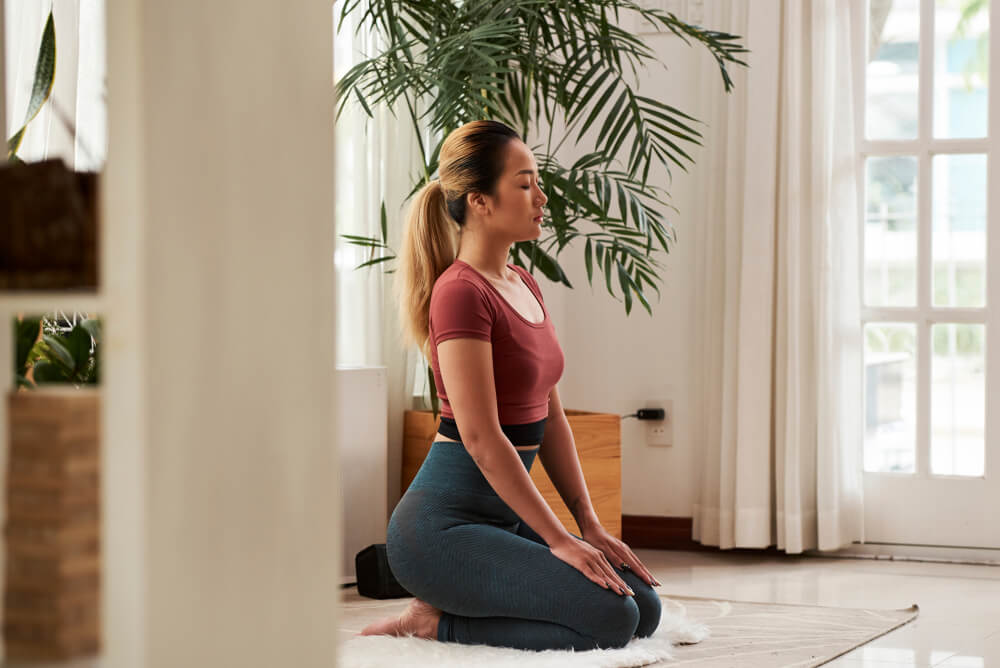
15 Ways You Can Combat Stress
Ward off the physical and psychological impact of stressful situations by incorporating these 15 healthy ways to handle stress.
Mind-Body Techniques
- Meditation – A 2020 study on the impact of meditation on anxiety and stress demonstrated that even “five to twelve minutes of daily mindfulness meditation is associated with decreased stress.” Guided meditations are available on various apps, podcasts, and mindfulness websites to help you get started.
- Yoga – Yoga has been proven to have “a moderating effect on the nervous system, the hormonal emissions, physiological factors, and regulation of nerve impulses,” which can reduce stress and anxiety. A consistent Hatha yoga practice, in particular, effectively reduces stress.
- Deep breathing – According to Harvard Health, taking focused, mindful breaths “encourages full oxygen exchange,” which can promote calm, relaxed feelings in your mind and body. Concentrated breathing for at least ten minutes daily can help you to detach from stressful thoughts and sensations.
- Progressive muscle relaxation – Progressive muscle relaxation (PMR) involves activating and then relaxing your muscles individually. The goal is to mindfully release any physical tension that may interfere with feelings of well-being. Find a quiet place, start with your toes, and work up your body to find relaxation.
Exercise
- Cardiovascular exercise – Participants in a study on the relationship between heart-pumping exercise and the stress response showed “significantly reduced stress reactivity” after 12 weeks of endurance training. Increase your heart rate through swimming, running, cardio classes, or cycling.
- Strength training – Research has shown a positive correlation between resistance training and “improvements in mental health, including increased cognition, mood, and general quality of life.” This is because repeated muscle activity releases feel-good endorphins that help boost feelings of well-being and reduce the sensations of stress.
- Outdoor activities – According to Stress Reduction Theory, exposure to nature can help you recover from physiological stress and mental fatigue. Breaking a sweat while outside can help enhance feelings of well-being with the natural mood-boosting hormones that come with physical activity.
- Mind-body exercises – Mind-body exercises, like Tai Chi, combine mental focus with physical activity. This combination can make a significant difference in the way you experience stressful feelings. Other mind-body activities include stretching, qigong, Pilates, and even hobbies with light physical movement, like gardening.
Lifestyle Changes
- Healthy eating habits – In times of stress, many people turn to food as a coping mechanism. Rather than overindulge in unhealthy foods, practice healthy eating habits. Plan to eat three healthy meals daily and stick to nourishing foods unlikely to exacerbate feelings of sluggishness, irritability, or anxiety.
- Adequate sleep – Sleep and stress often exist in a feedback loop, where stress-related insomnia can become a chronic problem that perpetuates problems with each. Poor sleep habits are “associated with higher blood pressure and cortisol level during psychosocial stress.” Implement excellent sleep hygiene habits and aim to get at least seven hours of sleep per night to support your system.
- Time management – A balanced schedule is crucial to help relieve the mental load that contributes to feelings of stress. Think about how to handle stress daily. Try careful pre-planning and time management with each of your work, home, and social activities. Divide your schedule as evenly as possible between the tasks that matter most to you, always leaving time for leisure in your agenda as well.
- Social support – When stress starts to feel overwhelming, it can be hard to ask for help. In this case, a strong support network is essential. Look for ways to find support for everyday stressors weighing on you, such as support groups or mental health programs.
Professional Help
- Therapy – Friends and family can be excellent sources of support. Still, sometimes it’s helpful to find a neutral third-party trained in therapeutic stress management. These professionals can create an understanding, unbiased environment to help you vent stressful feelings and practice healthy ways to handle stress by learning new coping skills.
- Counseling – Specialized stress-focused counseling can help you address the connection between your stress response and your thoughts and behaviors. Counseling can be done individually, but you can also find couples and family counselors for group support.
- Medication – There’s no medication for stress, but there are medications that can help to manage the signs and symptoms of chronic stress and anxiety. Talk to your doctor if the stress has become challenging to manage on your own to see if medication is right for you.

The Bottom Line
The way we deal with stress matters. Stressing about stress becomes a self-fulfilling prophecy; the more you worry about stress affecting your health, the more it can affect your health. Seeing stress for what it really is—an adaptive response that evolved to protect you from threats to your well-being—and practicing proper self-care can ultimately lead to better long-term health.
The Aviv Medical Program takes a holistic approach that can combine hyperbaric oxygen therapy, cognitive exercises, physical training, and nutrition coaching, to achieve optimal results. Based on over a decade of research and development, the intensive treatment protocol is customized to your needs. The Aviv Clinics in central Florida is the only center in the United States to offer this program.

